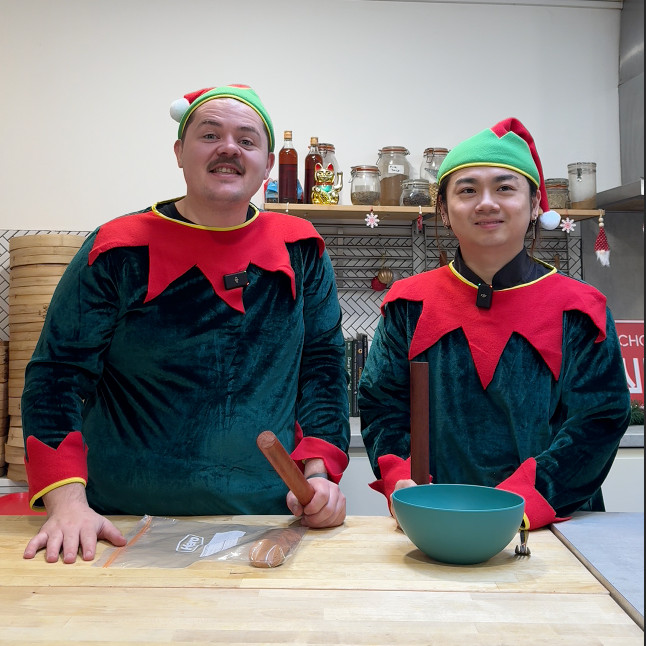

What are Bao Buns & How Can You Make Them?
Bao buns are everywhere, and they have been for a while. They’re sold pre-packaged in our supermarkets and as sides and snacks in our favourite restaurants. Whether you eat them on their own for lunch or dinner or to go alongside vegetables and other dim sum, such as gyozas, bao buns are undoubtedly a light, delectable dish that can be made to suit the tastes of everyone.
However, there are some people who may not know what bao buns are, or where they originated from. Where we’ll be touching on that in this article, we’ll also be telling you how you can make them yourself at home. However, you might wish to have the help of a professional. So whether you’d prefer some dim sum cooking classes or a bao bun corporate event to attend with your colleagues, School of Wok has an impressive range of cooking classes in London that you can enjoy.
What are bao buns?
Bao buns, or steamed buns as they’re also known, are essentially small pieces of white dough, with a slightly sweet taste, that is stuffed with a filling. Usually, bao buns are filled with a savoury mix, but they can also be stuffed with a sweet filling. Often compared with dumplings, bao buns are often considered to taste far sweeter in comparison.
The dough of a bao bun will be made from the following ingredients: flour, yeast, sugar, baking powder, milk, water and oil. Typically, bao buns are steamed in order to cook them. Bao buns are also said to have originated in China, with the first recorded instance of the invention of the bao bun dating back to as early as the 3rd century. With that in mind, let’s take a look at where bao buns originated, along with some history of the bao bun.
The history of the bao bun
Bao buns have burst onto the scene in recent years, thanks to their light and fluffy appearance as well as their delicate, aromatic and delicious flavours, whether they’re enjoyed as a sweet treat or as a savoury side dish. But how old are bao buns, really? Contrary to popular belief, they weren’t invented within the last few years. Bao buns are actually an extremely old dish, dating back to the age of the Three Kingdoms period in China.
However, in their infancy, bao buns weren’t necessarily filled with anything to enhance their flavour, they were simply made of a sweet, light dough. It’s thought that filling them with different types of foods is a modern spin on the traditional bao bun. In addition, wheat became a staple ingredient across China, being cultivated in vast quantities, so it made sense to take that surplus wheat and use it to make the delicious bao bun, whether it’s filled with anything or not.
How to make bao buns
The cooking process when it comes to making bao buns yourself at home is fairly simple. However, if you’re looking to make bao buns like the professionals, then you should look to us here at School of Wok. We have a bao bun cooking class in London available for you and your work colleagues to attend.
Here, you’ll learn everything there is to know about making bao buns, from preparing your ingredients to steaming them to absolute perfection. If you’re wanting to make authentic bao buns that would rival even the most specialist of restaurants, then look to School of Wok for corporate cooking classes in London. However, if you wish to make them at home, without the supervision of a qualified, specialist chef, here’s the ingredients you will need:
- 525g of plain flour
- 1.5 tbsp caster sugar
- 1 tsp fast-action dried yeast
- 50ml milk
- 1 tbsp sunflower oil
- 1 tbsp rice vinegar
- 1 tsp baking powder
Step one: prepare the dough & leave to rise
- Take a bowl and combine all of the dry ingredients together
- Once thoroughly mixed, add the wet ingredients
- Mix until a dough is formed and then tip it out to start kneading
- Cover the dough and then leave to rest for around 10 minutes
- Uncover the dough and knead again for a further minute
- Leave the dough to rise for approximately 1 hour
Step two: divide the dough & leave to rest
- Check the dough, if it has doubled in size then it’s ready
- Gently knead the dough this time, and not for too long
- Cut the dough into even pieces
- Take the individually-cut pieces and roll into a ball
- NOTE: when working the dough, make sure you cover up the bits you’re not working with
Step three: form the bun shape, allow it to rise again and then cook
- Roll the dough out into a long oval piece
- Brush oil over the top of the dough ball
- Fold the dough ball in such a way that it forms a bun-shape
- Place it onto some grease-proof paper or parchment paper
- Allow the buns to rise again before cooking them
- If using a steamer to cook them, lay a towel under the lid - this prevent water from dripping onto your perfectly-formed buns
- Steam the buns and leave them to rest, covering them with a lid before serving
- Your bao buns can be served warm or you can save them for eating later
School of Wok has an impressive range of cooking classes in London for you to attend. Whether you’re looking to learn some new home-cooking skills or are looking for some team-building and team-bonding activities to do at work, School of Wok will have you covered. For more information, get in touch with us today on 0736 526 6695 - we’re always pleased to hear from you.





